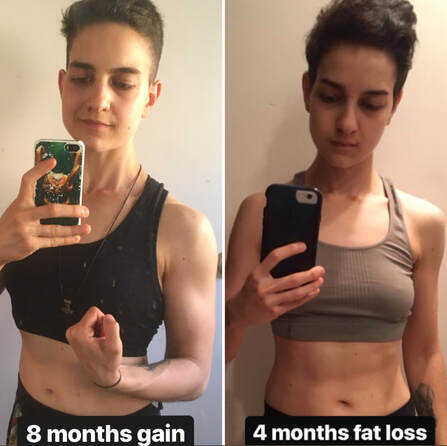I’ve learnt to appreciate my body, because it’s taken me all the way here and will take me to the end. For a transgender man, the first day on testosterone is the first day of a new life.
Hormone replacement therapy (HRT) can make a huge difference in a trans person’s quality of life, but it also comes with some health risks. I want to point out first that testosterone alone would likely not cause conditions or diseases, but it can be a contributing factor, as it can be for an average person born in a male body. If you were born in a female body, it may be that no one ever advised you about these potential issues, thinking you would never have them. So I hope my article sheds light on these topics, not put you off taking testosterone. I’m not on HRT at the moment, but I plan to. In the UK, you have access to it for free through the National Health Service (NHS), but you have to be referred by a general practitioner (GP). Moreover, there are only a handful of gender clinics in the country and the wait lists are very long. As an alternative, you can get private treatment, but the cost can be crippling. I was referred to an NHS gender identity clinic in September 2018. The current wait for an appointment ranges from one to two years, so I have a long way to go, unless I can save up enough to fund private therapy. The benefit of waiting this long is that I’ve had time to conduct research on the topic of transgender health. I believe I owe it to my body to be as informed as I can about all the risks and, most importantly, all the ways to minimise them. What I found enforced my belief that a healthy lifestyle may be even more crucial if you decide to take hormones than if you don’t. In this article, I’m going to touch upon three of the most important aspects of healthy living for a transmasculine person.
2 Comments
Useful Links: One Month Update | Three Months Update Success is no accident. It is hard work, perseverance, learning, studying, sacrifice and most of all, love of what you are doing or learning to do. In June 2019 I celebrated my first lifting birthday after years of endurance work and cardio-based fitness classes. So I felt it was time to write a bulk update.
I made several changes to the way I train, taking advantage of knowledge gained since the last update. So this one is going to be a little different. Instead of simply outlining what I’ve been doing, I will focus on what’s new or more recent and the rationale behind my decisions. Without further ado, let’s get to it! Feed yourself with what it’s needed to fulfil your mental and physical demands. IIFYM stands for If It Fits Your Macros, a style of eating that allows you to pursue any weight-related goal without restricting foods. You meet your calorie target by “hitting” certain amounts of each macronutrient (in grams), regardless of source. In other words, you can eat anything, as long as you can “fit” it into your calorie requirements.
In my short series of articles on nutrition, I mentioned that 1 gram of each macronutrient corresponds to a certain amount of calories:
Technically, although we tend to use the colloquial term calories, they should be referred to as kilocalories, which is also the unit used on all food labels. You need 1,000 calories to make up 1 kilocalorie. For the sake of simplicity, I will keep calling them calories throughout the article. That said, IIFYM in simple terms is another way of counting calories. In fact, most people count both calories and macros and have specific targets for each. IIFYM sounds like an easy way of keeping your nutrition in check without falling into the disordered eating trap of classifying foods as “good” or “bad.” If you have ever tried it, though, you might have questioned at least one of the following:
In this article, I’ll give you an answer to each question and practical tips to take your IIFYM diet to the next nutritional level. *A note on alcohol: Alcohol isn’t a macronutrient (sorry, folks), but it does contain calories, so that’s why it’s included here. When accounting for alcohol intake, you can log the calories from your alcoholic drinks as fat, carbs, or a combination of the two. For example, if you drink 460 kcals of alcohol, you could log them as 115 gr of carbs, 52 gr of fat, or 93 gr of carbs and 10 gr of fat. This comes down to whether you want to have more calories left for carbs or fat for the rest of the day. The basics win fights. How’s your training going?
Making progress, achieving your goals, enjoying yourself? Awesome. None of the above? Then keep reading. In this article, I will tell you three easy, inexpensive things you can do to improve your training instantly. Curious? Let’s get into it! |
Nikias TomasielloWelcome to my blog. I’m an online fitness coach with a passion for bodybuilding, fantasy, and bread. Want to work with me? Check out my services!Archives
May 2024
Tags
All
|
Follow me on social media |
Get in touch |
© 2018-2023 Veronica Tomasiello, known as Nikias Tomasiello – All rights reserved





 RSS Feed
RSS Feed